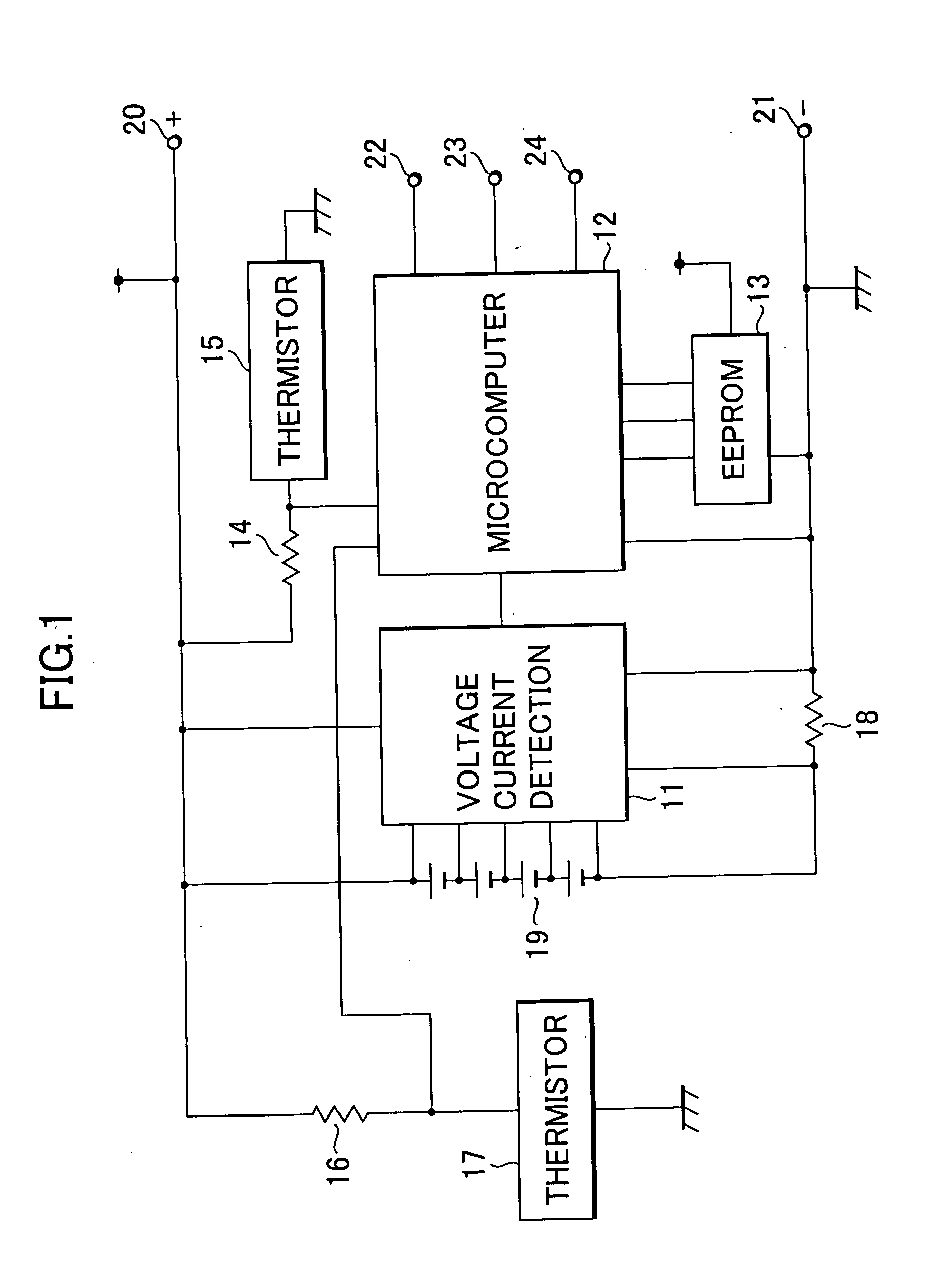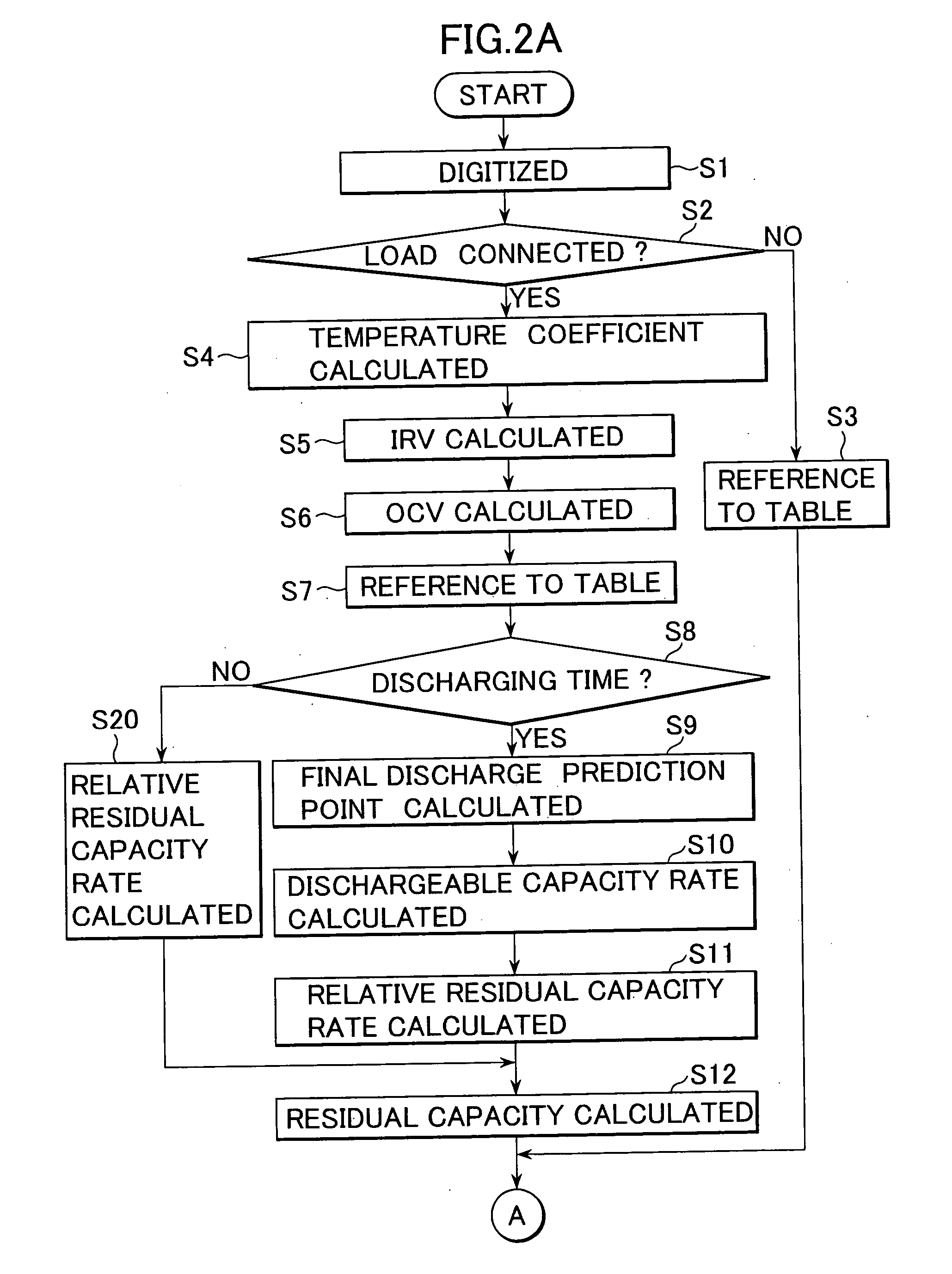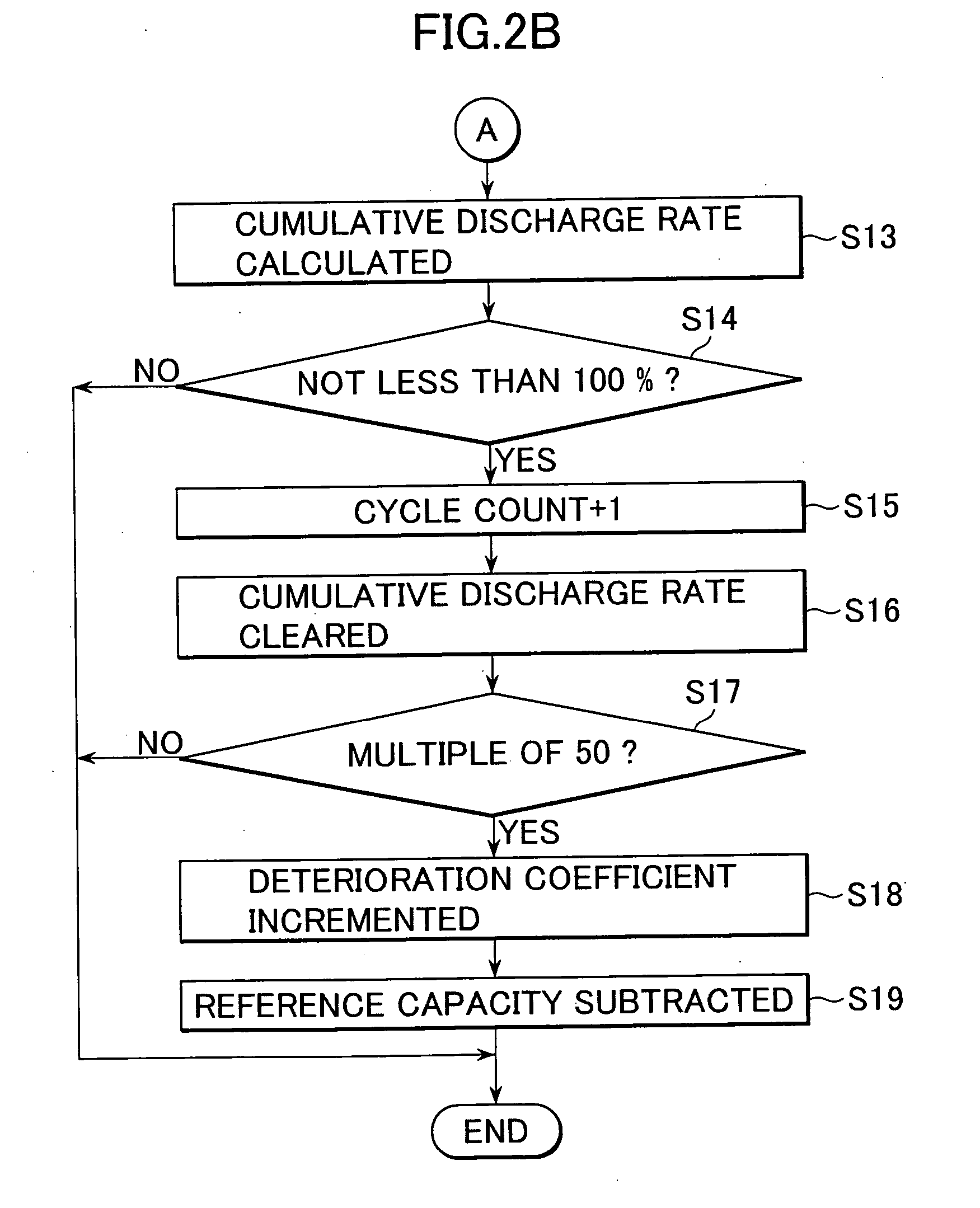Secondary cell residual capacity calculation method and battery pack
a residual capacity and cell technology, applied in the field of secondary cell residual capacity calculation method and battery pack, can solve the problems of large error, difficult to increase the number of tables randomly, and extremely difficult to suppress errors, so as to achieve easy detection and residual capacity accuracy
- Summary
- Abstract
- Description
- Claims
- Application Information
AI Technical Summary
Benefits of technology
Problems solved by technology
Method used
Image
Examples
Embodiment Construction
[0039] The present invention relates to a secondary cell residual capacity calculation method and a battery pack. More specifically, the present invention relates to a residual capacity calculation method in a battery pack incorporating a microcomputer, and the battery pack.
[0040] An embodiment of the present invention is described hereinafter with reference to the accompanying drawings. FIG. 1 shows the whole configuration of an embodiment of a battery pack obtained with the present invention applied. A positive electrode side of a secondary cell group 19 composed of a plurality of secondary cells connected in series is connected to a positive terminal 20, and a negative electrode side thereof is connected to a negative terminal 21 through a resistance 18. Specifically, the positive terminal 20 is connected to a reference voltage, and the negative terminal 21 is grounded. Each of the plurality of secondary cells that form the secondary cell group 19 is a lithium ion secondary cell...
PUM
 Login to View More
Login to View More Abstract
Description
Claims
Application Information
 Login to View More
Login to View More - R&D
- Intellectual Property
- Life Sciences
- Materials
- Tech Scout
- Unparalleled Data Quality
- Higher Quality Content
- 60% Fewer Hallucinations
Browse by: Latest US Patents, China's latest patents, Technical Efficacy Thesaurus, Application Domain, Technology Topic, Popular Technical Reports.
© 2025 PatSnap. All rights reserved.Legal|Privacy policy|Modern Slavery Act Transparency Statement|Sitemap|About US| Contact US: help@patsnap.com



